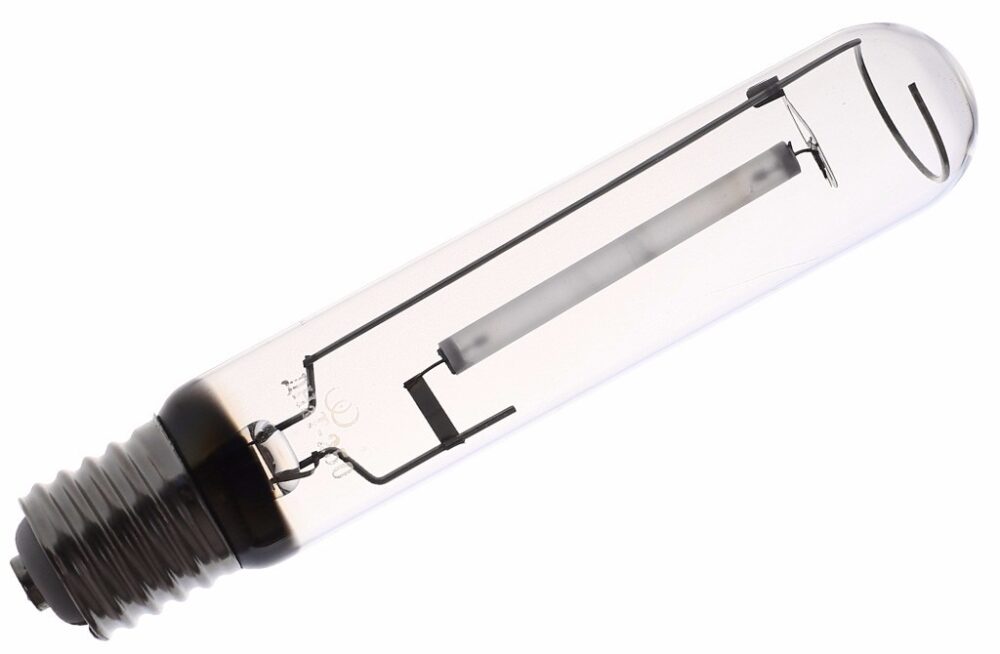Types of Grow Lights for MJ
When it comes to growing MJ, choosing the right lighting is crucial for healthy plant development and maximizing yields. In this article, we’ll look at three main types of grow lights: CFL (Compact Fluorescent Lamp), HPS (High-Pressure Sodium Lamp), and LED (Light Emitting Diode).
1. Compact Fluorescent Lamp (CFL)
As the name suggests, CFLs are energy-saving lamps, making them attractive due to their low electricity consumption. These lamps come in cool white (6400K), natural white (4200K), and warm white (2700K) color temperatures. For growing MJ, cool white (6400K) is used during the vegetative stage, while warm white (2700K) is ideal for the flowering stage. The wattage should be chosen based on your grow space and needs.
CFLs are popular among beginners because they don’t require extra equipment like ballasts or special cooling systems. They’re widely available, affordable, and not a fire hazard. You can also use CFLs as supplemental lighting. My first grows started with this type of lamp. Currently, I use a 100-watt 6400K CFL for the vegetative period when plants don’t need intense light yet. However, the main downside is yield—compared to professional grow lights, CFLs produce significantly less harvest. Still, they’re an ideal choice for first-time growers.
2. High-Pressure Sodium Lamp (HPS)
HPS lamps are considered one of the most effective and proven options for plant cultivation. There are many HPS brands on the market, with a wide price range. However, a higher price doesn’t always mean better quality. It’s important to research manufacturers and read reviews, as some brands market their HPS lamps as “specially designed for plant growth” without significant technical differences from standard HPS lamps—except for a much higher price.
HPS lamps are more complex to use. First, they can be a fire hazard, so growers use a cool tube (a heat-resistant glass tube with a socket, reflector, and hangers, sold separately). Second, HPS lamps require a ballast (a combination of a choke and an ignitor), which often costs more than the lamp itself. Third, you’ll need an inline fan for cooling, and quality fans aren’t cheap.
On a personal note, when I first started growing, a friend and I bought a “professional” HPS lamp, found a suitable socket, and plugged it in—nothing happened. At the lighting store, we learned we needed a ballast, which wasn’t in stock and only available at specialty shops. In hindsight, it was a blessing: we didn’t know about cool tubes, the lamp was 250 watts, and our first grow box was a small cabinet in a garage. If it had worked, the whole place could have caught fire. So, always be careful with HPS lamps.
HPS lights have very high light output, allowing light to penetrate dense foliage and promote fruit development on lower branches. They last about 25,000 hours, but after that, they’ll get dimmer and need replacing. I’ll cover how to properly install and connect HPS lamps in a grow box in a separate article.
3. Light Emitting Diode (LED) Lamps
LED grow lights are a relatively new addition to the market. They don’t require extra cooling, ballasts, or special fixtures, and usually come with a power cord and mounting kit. However, there are some downsides. The first is price—a powerful, reputable LED lamp can be expensive. You can order cheaper options from China, but be aware that the light spectrum, diode quality, and assembly may be lacking.
For example, I bought a 50-watt UFO LED lamp from a Russian online store for about $80, and another 300-watt lamp from a Chinese factory for about $120. The Chinese lamp’s fan broke during the second grow cycle and made loud noises for 15 minutes after startup, then quieted down but never became silent. It turns on instantly, unlike the UFO, which has surge protection and lights up gradually. The Chinese lamp also glowed faintly when plugged in but switched off, which I fixed by flipping the plug in the outlet.
The second downside is limited light penetration and coverage area. On the plus side, LEDs aren’t a fire hazard, provide good yields, and last about 50,000 hours.
There’s a lot of debate about whether HPS or LED is more effective. Don’t fall for marketing claims that a 50-watt LED is equivalent to a 250-watt HPS—this is just advertising. Videos like Gorshkov’s clearly show this isn’t true. Personally, I’ve found that a combination of LED and HPS works best, and I’ve used this setup successfully for a long time.
Conclusion
In the next article, I’ll provide examples of how to calculate lighting for your grow box. Stay tuned for updates!



